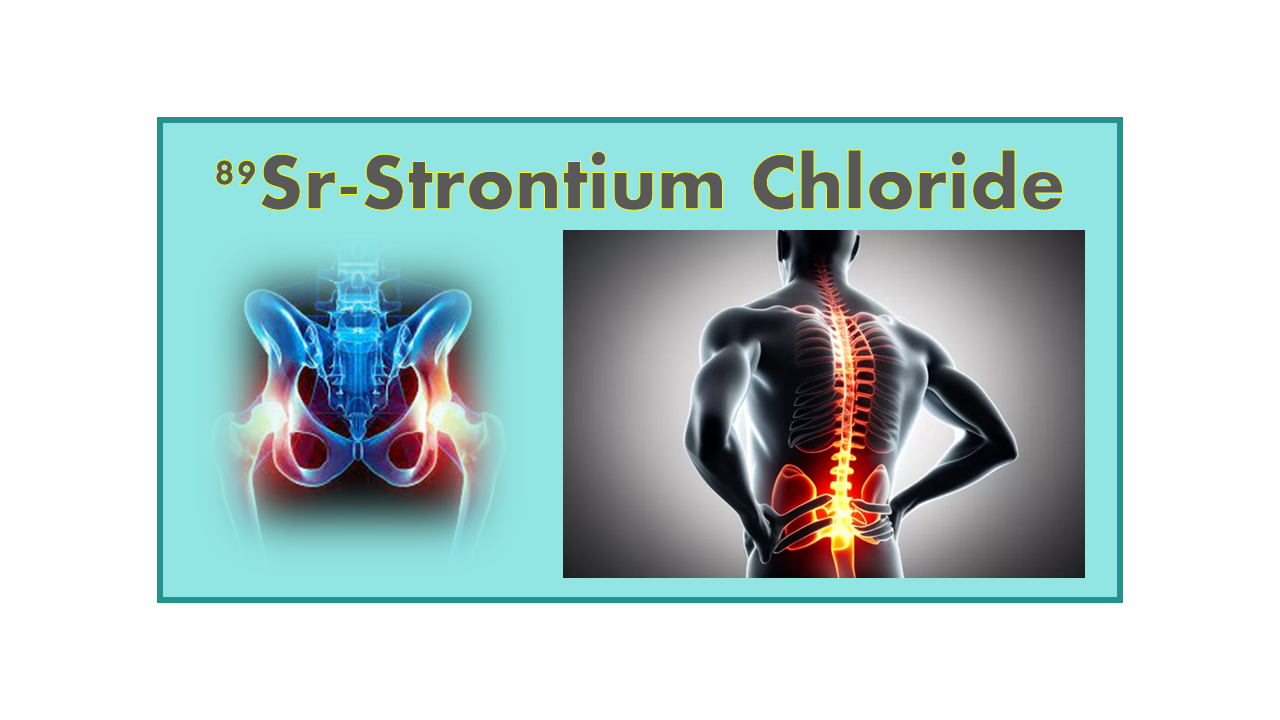
89Sr-Strontium Chloride
March 23, 2024
Strontium chloride is a chemical compound that consists of strontium cations (Sr2+) and chloride anions (Cl–). When combined with the radioactive isotope 89Sr, it forms 89Sr-Strontium Chloride, which is used as a radiopharmaceutical for the treatment of bone cancer.
Strontium-89 (89Sr) is a radioactive isotope of strontium that is commonly used in nuclear medicine for the treatment of bone cancer and bone metastases. It emits beta particles which can target and destroy cancer cells in the bones.
The high-energy beta particles emitted by 89Sr can penetrate the bone tissue and target the cancerous cells, leading to localized radiation therapy. This treatment can help alleviate pain and reduce the size of tumors in the bones.
Overall, 89Sr-Strontium Chloride is a valuable tool in the management of bone cancer and bone metastases, offering a targeted and effective treatment option for patients.
Description
89Sr-Strontium Chloride has been developed by Amersham under the name Metastron™. It was first approved in the US in 1993, which means it is now considered as a generic. In November 2018, Q BioMed, Inc. (New York, USA) acquired the product Metastron (strontium chloride 89Sr) from GE Healthcare, but generics are also available (POLATOM, Pars Isotope).
Clinical applications
89Sr-Strontium Chloride is indicated for the relief of bone pain in patients with painful skeletal metastases that have been confirmed prior to therapy. 89Sr is chemically similar to calcium and the agent follows the biochemical pathways of calcium in the body. More than 50% of the injected dose concentrates in bones. Strontium is incorporated into the hydroxyapatite molecule in bone with uptake occurring mainly at sites of active osteoblastic activity. Retention is highest in these cells (ratio between normal bone cells and osteoblatic cells is up to 1 to 10) and also longer (higher than 50 days compared to a biological half-life of 14 days for Strontium).
With these favorable parameters, one expects that the drug would react directly with the tumor cells and should reduce the tumor mass. Hence the drug should increase the life expectancy at higher doses, but this has never been clinically demonstrated and the drug is authorized only as a pain palliation agent. At pain palliation doses, there is apparently no effect on survival, only a decrease in biomarkers (PSA) is observed.
For bone pain palliation an administered dose of 4 mCi (or 40–60 µCi/kg body weight) is used. Unfortunately, it appears that the agent is not effective in about 30% of the patients, probably as a consequence of the fast repair mechanism of sub-lethal doses. The low dose rate of 89Sr limits the effectiveness of the agent. Combined with certain platinum- mediated radiosensitizing chemotherapeutic agents 89Sr-strontium chloride appears to be more efficient.
Competition
Up to 2013, 89Sr-Strontium chloride was in competition for the same indication with two products already on the market, the generic 32P-Sodium Phosphate and 153Sm- Lexidronam EDTMP (Quadramet). The availability of 223Ra-Radium Chloride (Xofigo) changed the way late-stage metastasized prostate cancer patients are treated.
Since 2003, the University of Oslo, Norway, has held patents for 125I-, 123I-, 131I-Hipeba, a small molecule that was also developed for pain palliation, but in the absence of interested investors, the development of this product is now probably completely stopped.
Availability and price
89Sr-Strontium Chloride is readily available and easy to apply. Generic forms are available as well (e.g., Polatom, Pars). It remains one of the less expensive pain palliation agents available to date. Shelf-life is 28 days after ART.
In 2012, US reimbursement for bone pain palliation agents including Strontium Chloride was increased from US$ 3,250 (EUR 2,900) per dose to US$ 7,555 (EUR 6,600) per dose.
In 2018, Q Biomed initiated a therapeutic expansion post-marketing phase IV trial for their 89Sr-Strontium Chloride. The company has also submitted a regulatory filing to the US FDA for the approval of a new manufacturing facility for this product, finally approved in November 2019. In October 2019, Q BioMed and Jubilant Radiopharma announced an agreement about the distribution of 89Sr-Strontium Chloride in the US and the first sales started in March 2020.
Since January 2020 in the USA, a dose of 89Sr-Strontium Chloride is charged around US$ 4,300, up from previously US$ 2,200.
Comments
89Sr was discovered in 1941 by the Belgian chemist Charles Pecher while working at Ernest Lawrence’s cyclotron facility and the drug was applied to human for bone pain palliation first in 1948 by Ernest’s brother, John Lawrence.
89Sr-Strontium chloride is an older product that, despite high competition, must still be considered as an efficient and above all non-expensive treatment for pain palliation in prostate cancer metastasized disease.